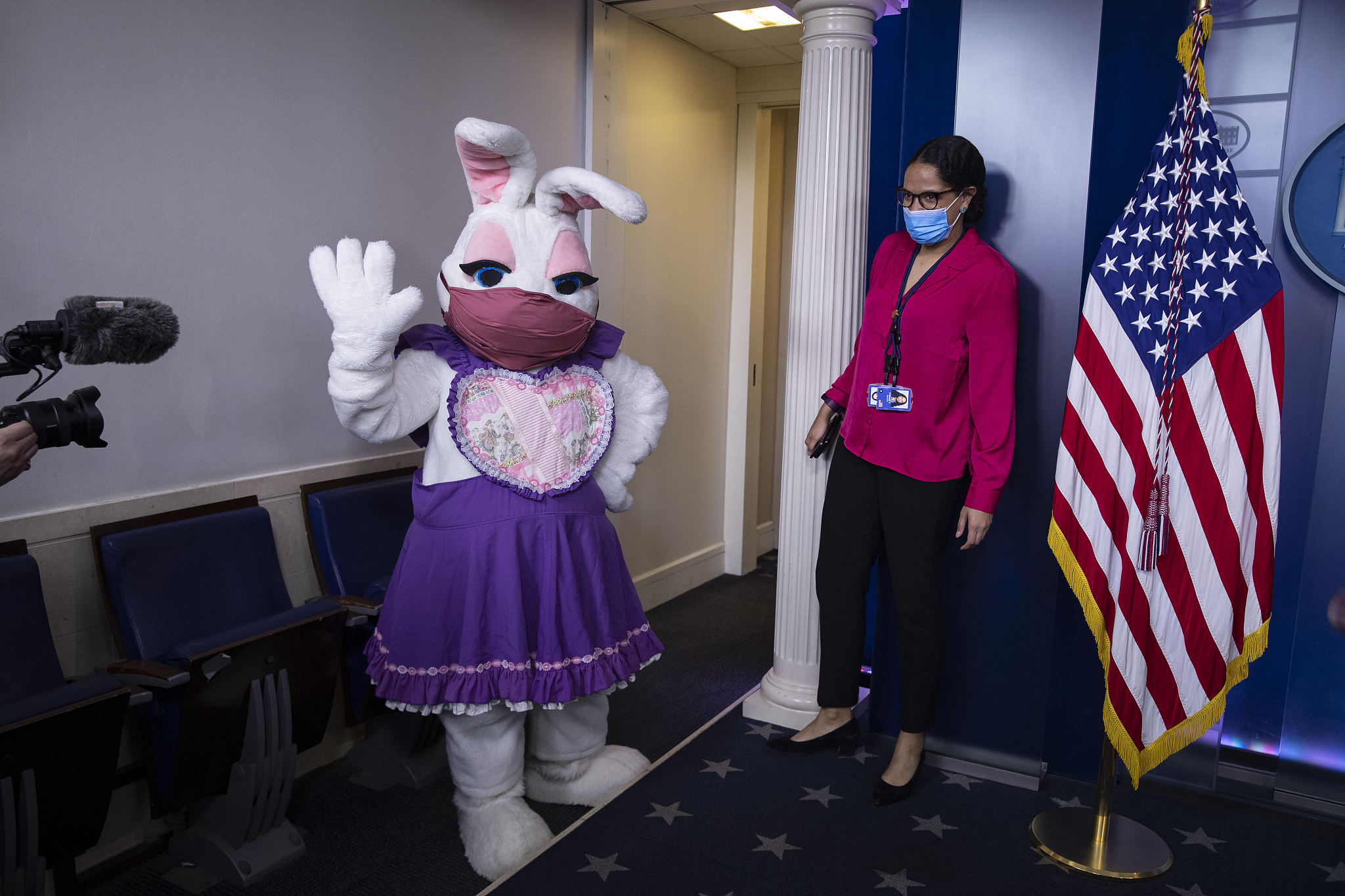
Editor's note: Thomas O. Falk is a London-based political analyst and commentator. He holds a Master of Arts in International Relations from the University of Birmingham and specializes in U.S. affairs. The article reflects the author's opinions and not necessarily the views of CGTN.
Many Americans remain hesitant regarding a COVID-19 jab with the result that infections are on the rise again. And after what was premature optimism, President Joe Biden now faces his first significant defeat in office.
On July 23, the number of infections spiked to around 69,000 new cases per day. A month ago, the number hovered at approximately 13,000. The number of Americans admitted to hospitals due to COVID-19 increased from around 12,000 to around 30,000 within a month, including many younger people.
Moreover, the U.S. vaccination rate remains below that of many European countries, which is an obvious problem in a country with a significantly larger population. Vaccination rates remain particularly low in the southern states, making it easy for the Delta variant to infect more and more individuals.
The goal of the Biden administration was for at least 70 percent of the U.S. adult population to have received at least one dose by July 4 – a plan that was not achieved.
For months, Biden acted with extreme caution. However, in the end, his political luck left him in the fight against COVID-19. His goal that July 4 would not only be Independence Day but the end of the pandemic turned out to be too optimistic and too early.
With it came a false sense of security that led the Centers for Disease Control and Prevention (CDC) to essentially dropped the mask requirement for vaccinated people. Even the extraordinarily cautious and democratically governed California lifted practically all restrictions. Moreover, for the past two months, the topic of COVID-19 had almost disappeared from the public debate. Biden devoted himself to other political projects, especially his extensive infrastructure and social programs.

The Easter bunny visits the James Brady Press Briefing Room of the White House at the end of a news conference in Washington, D.C., U.S., April 5, 2021. /VCG
The Easter bunny visits the James Brady Press Briefing Room of the White House at the end of a news conference in Washington, D.C., U.S., April 5, 2021. /VCG
But it is hard to blame Biden's premature optimism per se.
Yes, Biden inherited his predecessor's vaccine program Operation Warp Speed and knew how to use it politically. The White House also ensured the best possible distribution of the vaccine.
But the vaccination campaign has long since stalled. An average of only 500,000 vaccinations are given every day; there were once seven times as many.
With the virus is on the rise again, a reversal is already beginning in the public health debate. In the greater Los Angeles area, masks are once again mandatory in public spaces – regardless of their vaccination status – while the CDC has also reversed course, stating on Tuesday that fully vaccinated people and kids should wear masks indoors.
Reports have also surfaced that suggest Biden is contemplating making vaccinations mandatory for federal employees and contractors.
How dire the situation has once again become can be seen by two developments in particular:
First, an agitated stock market and disappointing job market figures have not only revealed the fear of a new wave but also the clayey feet on which America's economy is recovering.
Second, all of a sudden, top Republican politicians such as Florida governor and 2024 hopeful Ron DeSantis have started advocating in favor of vaccinations. Even parts of right-wing television have changed tune. Fox News's Sean Hannity, who had been a figurehead for the anti-vaxxer movement, recently urged his audience to take the virus seriously and consult a doctor.
However, it is likely too little, too late. Republicans long agitated their supporters with skepticism about the vaccines and strenuous opposition to vaccinations in general. The logical consequence: Red states and counties that voted for Donald Trump in the presidential election have a significantly lower vaccination rate than blue states that voted for Biden. In July, the vaccination rate in counties that voted for Biden stands at 46.7 percent. Counties that voted for Trump stand at 35 percent – and the gap has been widening since April.
Incentives such as vouchers, money, lottery prizes or even university scholarships have been too little to no avail. They cannot overcome the prejudice and conspiracy theories that have manifested themselves in many American minds after over a year of indoctrination.
Biden is set to pay the price politically and face the first severe domestic setback during his presidency, but his major "mistake" was premature optimism and shifting public debate.
However, the real blame ought to be on those who managed to even turn public health and the vaccination against a potentially deadly virus into a partisan issue that has already cost too many American lives. It is a sad and worrisome state of affairs in a country with all the resources to immediately vaccinate every American.
And the price to pay could be yet another dark autumn as the erosion of trust in vaccinations cannot be as easily reversed as the questions of masks or social distancing.
(If you want to contribute and have specific expertise, please contact us at opinions@cgtn.com.)

